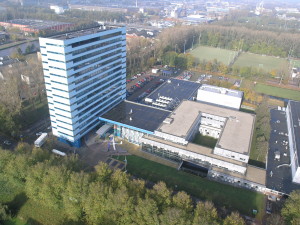About our research
The unit of analysis
A defining trait that sets humans apart from other species on this earth is the extend to which humans create and use tools. Technology, both simple (for example rope and knots) to advanced (computerised, automated devices) are used to make our lives more comfortable and pleasant. There are also downsides to the technology we use, devices break down, humans mis-understand or mis-operate devices, and a strategy that has worked for ages may suddenly fail to produce desired results.
Problems in the interaction with our “tools” are often attributed to deficiencies in the interface between the human user and the device. These deficiencies may be at different levels. Deficiencies in interface at the physical level are addressed by ergonomics, leading to improvements by fixing font sizes, choosing better color schemes for displays, improving comfort and precision of controls, etc. However, even with a perfectly legible display, the information may still be presented at the wrong place, leading to deficiencies at the procedural or task level. Using task analyses, run-throughs, timeline analysis, these issues can be addressed. At yet another, functional, level, the understanding between the human and machine may be lacking. This deeper understanding is needed when the learned procedures do not produce the required results. Ecological interface design provides an answer to these problems by visualising the constraints in the work domain, promoting a deeper understanding by human users.
All these issues need to be addressed, however, even with careful ergonomics, task analysis and design and visualisation of work domain constraints we still may be barking up the wrong tree. You can all know this already, instinctively. When working with technology and tools (including vehicles, etc.) we are familiar with, the tool at some point becomes an extension of our self. That is, we don’t think of interaction with the tool (for example such as the handlebars of the bike), but think of the interaction with the task and world (steering the bike around a pothole, to continue the example). So for further advances in developing our tools, we need to look at a larger unit of analysis, the human in combination with his or her tools. The concepts of being-at-hand and present-at-hand by Heidegger are of use here.
Cognition with the world
Also the concept of interface needs a fresh look. Many of our efforts in human-machine interaction are directed at streamlining the communication between human users and systems (tools, devices, vehicles) across the interface, with improvements to displays, multi-modal interaction and control devices. In these efforts cognitive, problem solving tasks are assumed to be assigned to the automation, typically if there is an algorithm available for the task, and other tasks are assigned to the human. In that view, increasing the bandwidth of the communication interface is indeed a way to remove impediments to successful cooperation.
It is advisable in this case to take a look back to older technology, not only for the technology’s sake and because it is good to know one’s history, but because the more remote viewpoint may offer a new perspective. Ed Hutchins’ book Cognition in the Wild offers such a perspective. Hutchins describes the work of seamen aboard a naval vessel. The account of the cognition that takes place emphasises that cognition is mainly the result of interaction between humans and their tools. And in extension to that, human users shape their environment and tools to facilitate their tasks. Post it notes, dog ears on pages, the arrangement of the papers on someone’s desk (not mine though) are all memory and cognitive tools. A human factors engineer determined to improve a work situation must be aware of all these serendipitous or designed cognitive tools or he/she is about to destroy a considerable amount of cognition.
What it boils down to
We try to apply the philosophy outlined above to our work, but there are many interesting projects on more technical or focused questions, see the list of projects below.


